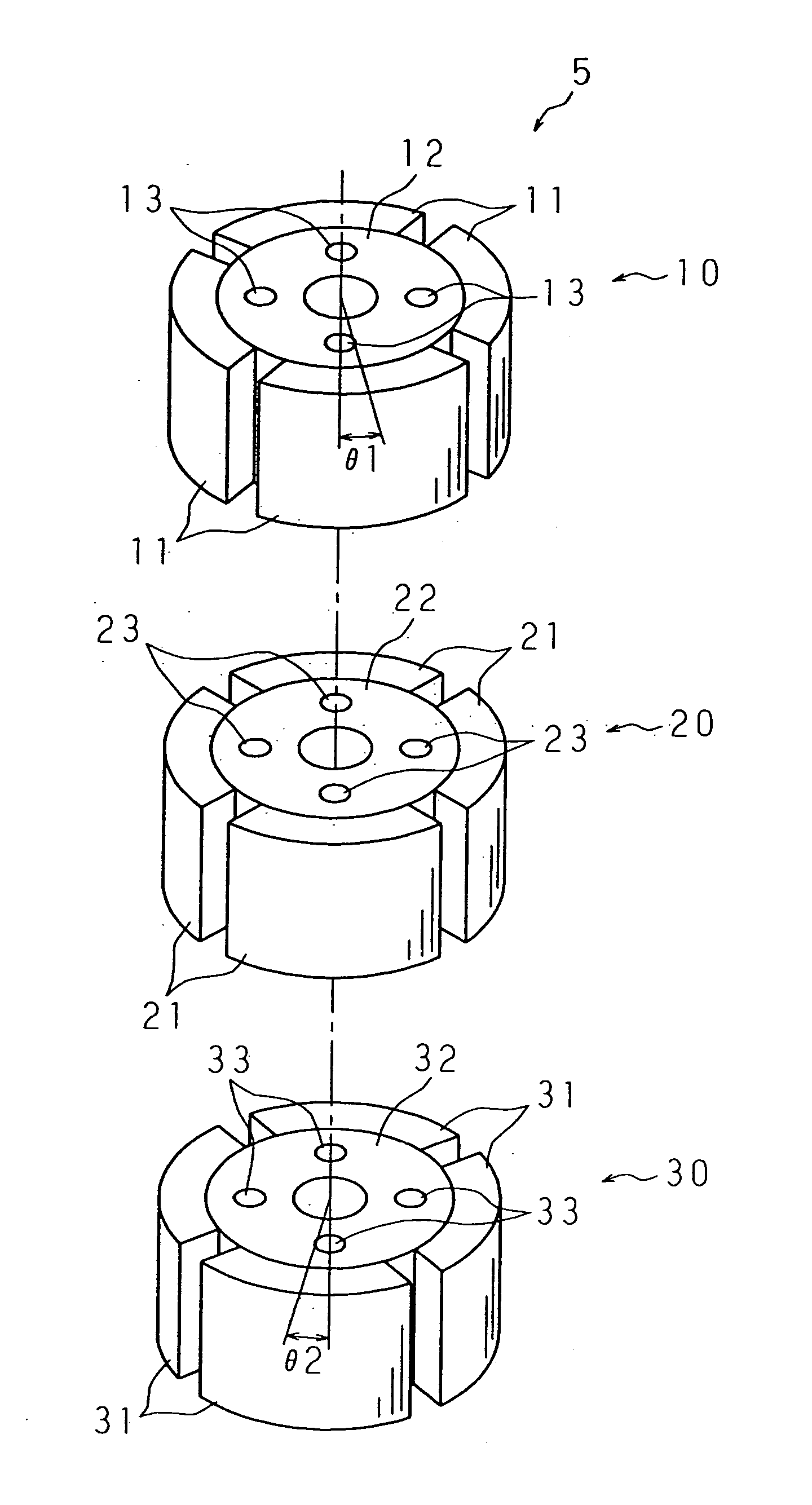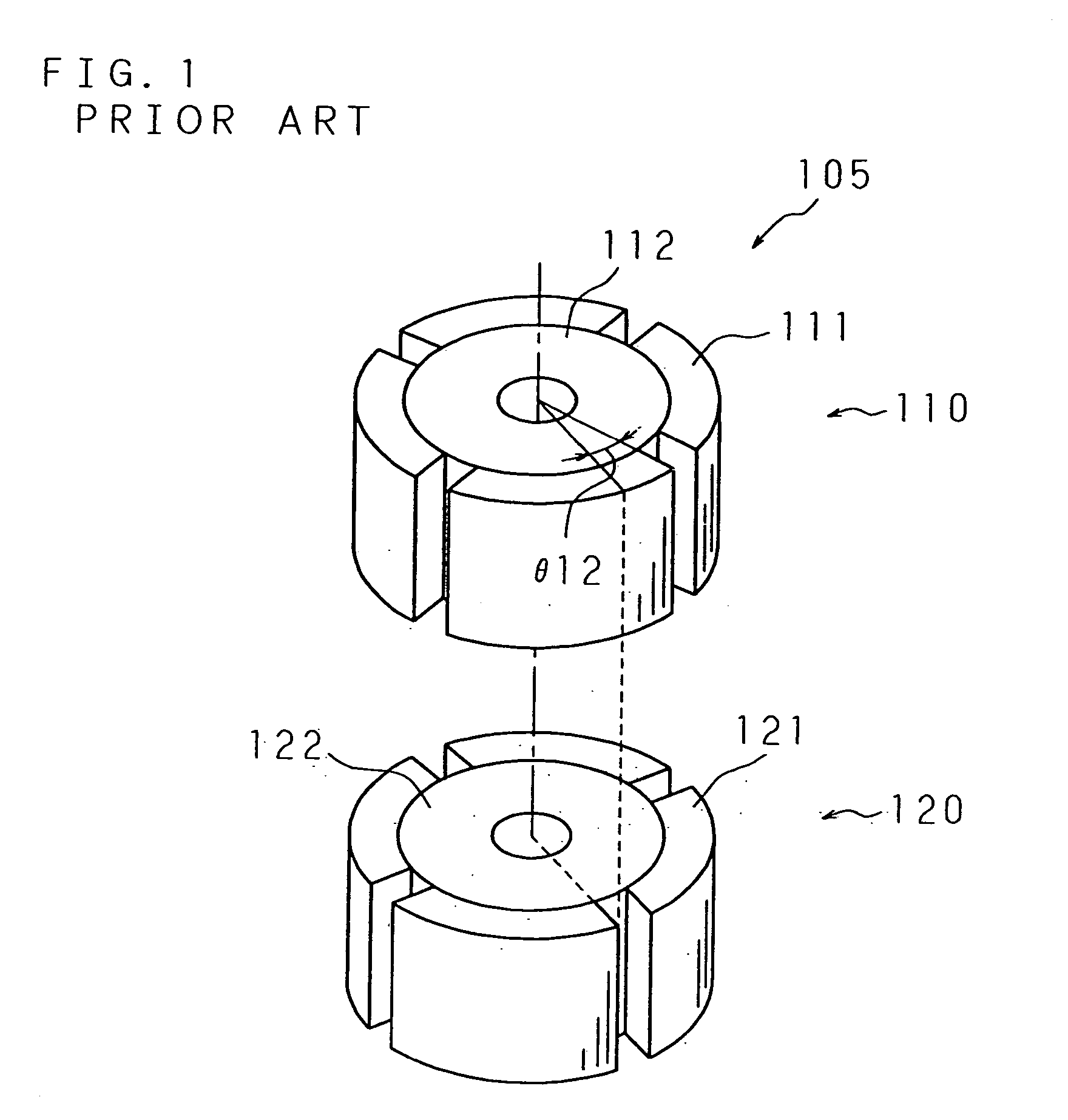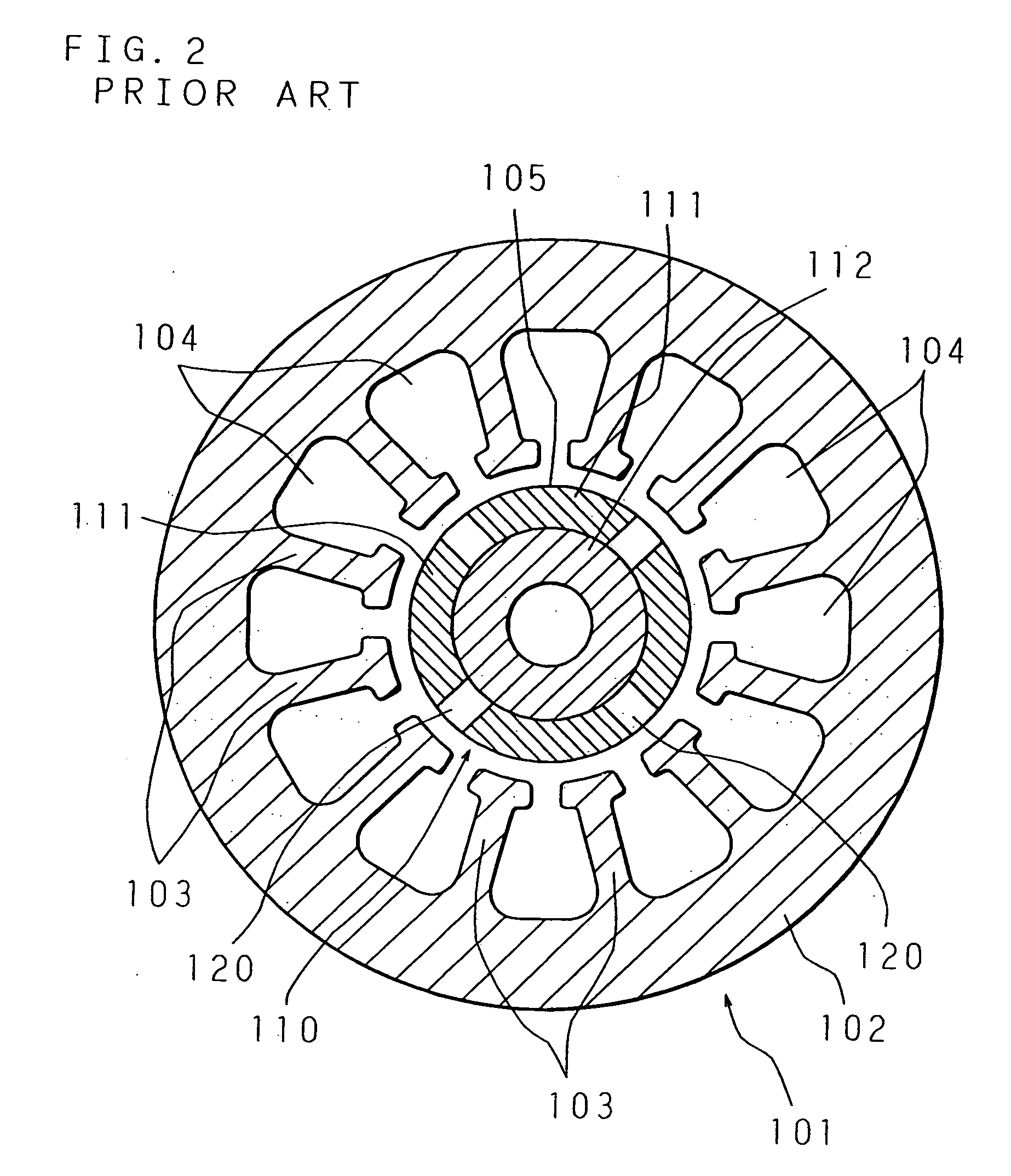Brushless DC motor and method of manufacturing brushless DC motor
a brushless dc motor and motor technology, applied in the direction of dynamo-electric machines, magnetic circuit rotating parts, magnetic circuit shapes/forms/construction, etc., can solve the problems of unavoidable torque pulsation, small cogging torque pulsation, and sacrifice of motor efficiency, so as to eliminate cogging torque
- Summary
- Abstract
- Description
- Claims
- Application Information
AI Technical Summary
Benefits of technology
Problems solved by technology
Method used
Image
Examples
first embodiment
(First Embodiment)
FIG. 10 is a perspective view showing the construction of a rotor of a brushless DC motor according to the first embodiment of the present invention. This rotor 5 is constructed by a rotor block 10 in the upper stage, a rotor block 20 in the middle stage, and a rotor block 30 in the lower stage. The rotor block 10 comprises an internal rotor core 12, and four permanent magnets 11 attached to the outer circumference of the rotor core 12 at equal intervals. The rotor block 20 comprises an internal rotor core 22, and four permanent magnets 21 attached to the outer circumference of the rotor core 22 at equal intervals. The rotor block 30 comprises an internal rotor core 32, and four permanent magnets 31 attached to the outer circumference of the rotor core 32 at equal intervals.
The rotor cores 12, 22 and 32 have the same size, and each of which comprises four coupling member insertion holes 13, 23, 33 for fixing the rotor blocks 10, 20 and 30 integrally with coupling...
second embodiment
(Second Embodiment)
FIGS. 14A, 14B and 14C show the construction of a rotor of a brushless DC motor according to the second embodiment of the present invention by a plan view (FIG. 14A) and cross sectional views (FIGS. 14B and 14C) in a direction perpendicular to the rotary shaft. This rotor is a permanent magnet-buried type rotor constructed by inserting permanent magnets into empty holes formed in a rotor core, and comprises a rotor core 17 and four sets of permanent magnets fitted at equal intervals into four empty holes 19 formed in the outer circumferential portion of the rotor core 17 at equal intervals along the outer circumference.
Each of the four sets of permanent magnets is composed of three permanent magnets 16, 26 and 36 located in the upper, middle and lower stages, the upper stage being one end in the direction of the rotary shaft. The permanent magnets 16, 26 and 36 have the same size. The rotor core 17 is formed by layering a number of thin electromagnetic steel pla...
third embodiment
(Third Embodiment)
As shown in FIG. 15, the third embodiment is implemented by applying the present invention to a brushless DC motor comprising a magnet-buried type rotor 5 having four magnetic poles. In other words, the rotor 5 of this brushless DC motor has magnet mounting holes 8 formed at four positions along the outer circumference, and permanent magnets 7 are mounted in the magnet mounting holes 8, respectively. The permanent magnets 7 are arranged adjacent to the outer circumference of the rotor 5. For this reason, it can be said that the opening angle of each permanent magnet 7 seen from a rotational center axis O is equal to the effective polar opening angle. The permanent magnets 7 are arranged so that adjacent permanent magnets 7 have mutually opposite polarities. A stator 1 comprises a yoke 2 as an outer circumferential portion, and twelve teeth 3 that are provided at equal intervals and protrude from the yoke 2 toward the center. Adjacent teeth 3 form a slot 4 together...
PUM
| Property | Measurement | Unit |
|---|---|---|
| electrical angle | aaaaa | aaaaa |
| length | aaaaa | aaaaa |
| angle | aaaaa | aaaaa |
Abstract
Description
Claims
Application Information
 Login to View More
Login to View More - R&D
- Intellectual Property
- Life Sciences
- Materials
- Tech Scout
- Unparalleled Data Quality
- Higher Quality Content
- 60% Fewer Hallucinations
Browse by: Latest US Patents, China's latest patents, Technical Efficacy Thesaurus, Application Domain, Technology Topic, Popular Technical Reports.
© 2025 PatSnap. All rights reserved.Legal|Privacy policy|Modern Slavery Act Transparency Statement|Sitemap|About US| Contact US: help@patsnap.com



